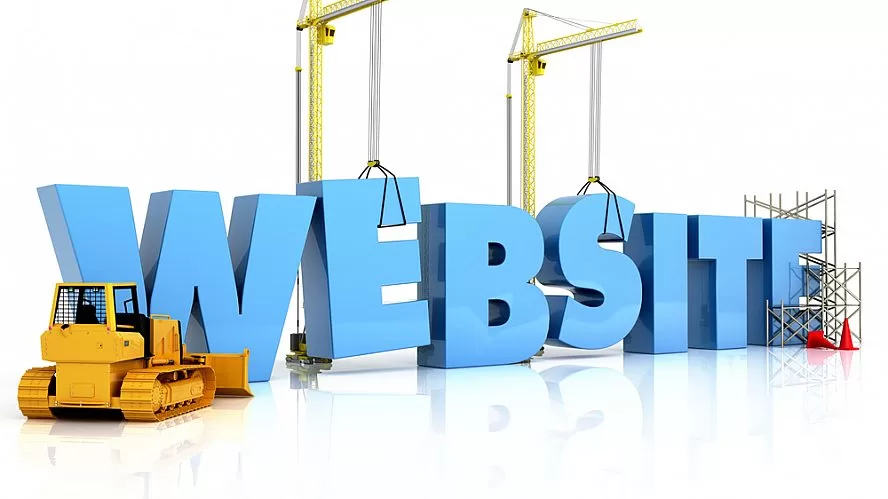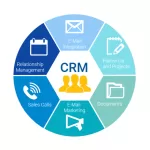How do you build a website
A company’s visibility has become an integral part of its success. This is one of the reasons why, after finalizing the creation of your company , the vast majority of entrepreneurs today decide to create a website . This choice is one of the ten tips for successful entrepreneurship!
Why create a website? How do you create a professional website ? What legal notices should you include? We’ll explain all the steps involved in creating a website.
Showcase website, e-commerce or blog: what are the differences?
How do you build a website? Before looking at how to create a website for an association or a business, it’s important to distinguish between the different types of websites that exist. Namely:
- the showcase site , that is to say the classic website which allows you to present your activity, your offer, etc.;
- the e-commerce site which is an online store where it is possible to purchase a physical or digital product directly;
- A blog is a website where articles are published. It can be a separate media outlet or a blog on a website designed to improve its SEO.
Why create a website for your business?
Creating a website allows for the establishment of an effective communication interface with the customer . The website allows the company’s state of mind to be reflected and the customer to be kept informed of developments and new developments in its business. Accessible at any time and on different media, it also promotes the development of sales of the company’s products.
The website support makes it possible to share various multimedia content : videos, photos, articles, etc. Such diversity encourages Internet users, potential and current customers, to react and share this content, thus naturally increasing the company’s reputation .
For all these reasons, creating your company’s website significantly enhances its credibility and its existence with the public!
How to create a website: what is natural referencing?
How do you build a website? If you’re wondering how to create an e-commerce website , or any other type of website, you need to understand the challenges and how SEO works.
Also known as SEO , natural referencing is a method which consists of optimizing your website to appear in the first results on search engines.
Why is this so important? It’s important to appear as high as possible in the results list to increase your company’s chances of attracting traffic to your website . This means making yourself known to new potential customers. In fact, the first page of Google results alone accounts for 91% of clicks, and the first result 32% on average. This means that if users find the answer to their question in the first results, they won’t go beyond the first page.
Therefore, it’s essential to optimize your website for SEO so that it becomes a real lever for growing your business. To do this, you must pay attention to certain technical aspects such as site loading speed and mobile display. You must also pay particular attention to the writing of your website’s content. Indeed, writing for the web requires knowledge of SEO best practices, particularly regarding keyword selection and placement.
How to create a website in 7 steps?
Want to know how to create a website? Here are the 7 main steps to follow:
- reserve a domain name ;
- choose a host;
- choose a CMS and configure the site;
- create the site models;
- create the content of the site;
- do tests;
- put the website online.
1 – Reserve a domain name
The first step in creating your website is to choose a domain name, which takes the form “www.yourwebsitename.fr.” It differs from a trademark in that it is not an industrial property title. The domain name is not registered with the INPI (French Intellectual Property Office). It is reserved for use only.
It’s still crucial for its commercial value to your customers. Choosing your name should therefore be part of a real strategy! For example, choose a short name, no more than three words, to make it easier for future users to access and remember.
2 – Choose a host for your website
Next, you need to choose a web host. This is a company that provides computer servers that can accommodate all of your website’s data (code, images, scripts, etc.).
There are different hosting solutions, such as a dedicated physical server or a cloud (shared hosting). So, what’s the difference between shared hosting and dedicated hosting?
Hosting costs are a significant factor in determining the price of a professional website . There are many competing hosting providers on the market. Take the time to analyze all the offers to select the one that best meets your needs!
3 – Choose a CMS and configure the website
To create your website, you also need a content management system (CMS), unless you decide to code your website from scratch. Indeed, the CMS is a solution that allows you to create the pages of your website without having to know HTML language , etc. There are many free and paid CMS on the market. Among the best known are:
- Wix;
- WordPress;
- Hostinger;
- Squarespace;
- Prestashop;
- …
Each CMS has its advantages and disadvantages. For example, creating a Wix website makes it easy to create pages from drag-and-drop templates and blocks. There’s even a free version. However, features can quickly become limited, and SEO performance isn’t always up to scratch. Creating a WordPress site offers more possibilities, thanks in part to the many themes and plugins available. On the other hand, Prestashop is a solution dedicated to e-commerce.
Once you’ve chosen your CMS, you’ll need to configure your website. Remember to schedule regular backups of your site, for example, weekly.
4 – Create the site models
Now for the creative part, since the next step in creating your website is designing the mockups. This involves planning the site’s organization, that is, the pages to be created and how you’ll be able to move from one to the next.
The models also allow you to visualize the construction of each of the pages of your future website by indicating the placement of text, photos, videos, and the graphic elements to be provided.
It is therefore a question of designing your website, before moving on to its actual creation.
5 – Create the content of your website
You can now create the various pages of your website. This requires first having:
- write editorial content;
- select photos;
- chose the videos;
- etc.
Don’t forget to place internal links and call-to-action buttons to make navigation easier.
6 – Carry out tests before going online
It’s essential to test your website before announcing its launch to the public. It’s not uncommon to experience bugs or display issues once the website is created. Therefore, it’s essential to check how each page displays on computers, smartphones, and tablets. Likewise, it’s best to test all links and buttons to ensure they work properly.
7 – Put the website online
You’ve reached the final stage; you can finally publish your website. Don’t hesitate to share this event with your customers and business partners, as well as in your newsletter and/or on your social media.
What are the legal notices for a website?
Creating your website requires taking the time to write the legal notices, whether you are opening an online sales site or not. It is a requirement . These include:
- for a sole trader: surname, first name, address;
- for a company: legal form, address of the establishment or registered office, amount of share capital, registration number in the trade and companies register or the trades directory, etc.
When it comes to a merchant site, the General Terms and Conditions of Sale must be included, including in particular: the price (in euros and including tax), the costs and the delivery date, the payment terms and the right of withdrawal. Therefore, if you decide to start an e-commerce business , take the time to find out about drafting e-commerce T&Cs.
Additionally, you should mention the cookie policy applied to your website . What is a cookie? It is a file placed on the user’s hard drive when visiting certain websites. This file stores information for future connections. When a website places or reads a cookie, website publishers must:
- inform Internet users of the purpose of cookies;
- obtain their consent;
- provide Internet users with a means to refuse them.
Who should I contact to create a website?
When creating your website, several experts can help you, in order to have the best possible result:
- a web designer;
- a webmaster;
- an SEO web editor;
- a photographer;
- a motion design expert;
- etc.
You can use a website creation or digital marketing agency, or contact freelancers directly.
How much does it cost to create a website?
If you’re wondering how to create a free website , you should know that, in practice, creating a website is never completely free. In fact, even if you do it yourself, you’ll have to pay at least for the domain name and hosting of your website. To these costs may be added the cost of the CMS depending on the solution chosen. However, it’s still possible to create a website for less than 120 euros per year.
How do you build a website?






